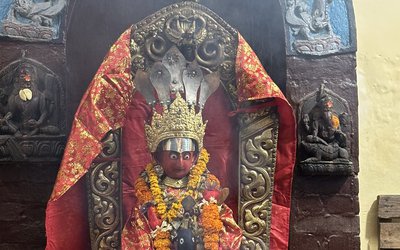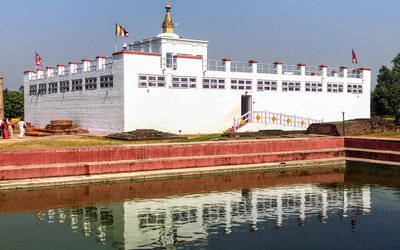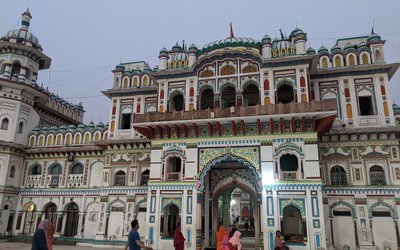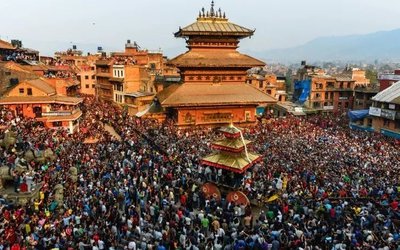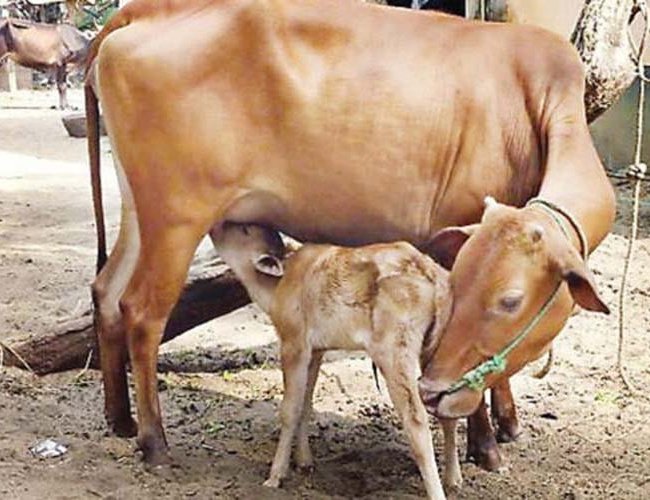
Hindus in Nepal and India marked the day of the cow by worshiping the bovines on Sunday the third day of the Tihar festival, or Diwali, the country's second-most important religious festival.
During Gai Tihar, people worship cows, which are considered to be the incarnation of Lakshmi, the Hindu goddess of wealth, fortune and prosperity. Across Nepal, devotees garlanded cows with marigold flowers and offered them food, he added.
Gai puja falls on the third day of the five-day Tihar festival, which celebrates not just human-divine but also human-animal relationships.
Apart from cows, considered a sacred animal by Hindus, dogs, crows and oxen are also celebrated during the festival.
The significance of Gau Puja
In Nepal and India, since childhood, people are taught to be caring towards cows. Cow products are beneficial for infants, children and adults. There is high nutritional value in it.
Gau Puja is performed to remember the importance of the cow. It’s an opportunity to show appreciation and reverence for it. The ritual possesses a symbol of beautiful spirituality and it has a deep universal significance.
Some devotees believe Gopastami (eighth day after Diwali), to be the day of appearance of divine Kamadhenu (Cow God). Hence, it is celebrated as a birthday or a special day for cows.
As a mark of respect, devotees worship cows and offer fresh grass and food on this day. On Gopashtami Lord Krishna became a gau-walla or cowherd. Hence, he is also known as ‘Gopala’. Lord Krishna had a great love for cows. Gau Puja Ritual Gopashtami is a festival of worshipping cows which is mainly celebrated in the Northern parts of India. Gopashtami falls in the Hindu month of Kartika.
On this day cows are beautifully decorated with their horns sharpened. They are fed with sugarcanes and succulent grass to express gratitude towards the cows. Devotees also offer owers, tilak, jaggery, rice and water and perform aarti. Devotees do parikrama (the action or ritual of moving clockwise around an object of devotion) of cows and apply ‘Guadhuli’ or soil beneath the cow’s feet on their forehead. By doing so, one may get prosperous and a happy life.
Many gems, animals and gods emerged from ocean churning which took place between Gods and Demons. Kamadhenu, the divine also emerged during ocean churning which has the capacity to fill every desire. Once, Kamadhenu reached the ashram of sage Vasishta. King Dilipan was childless.
Hence, sage Vasishta advised him to worship Kamadhenu to obtain a child. The king started worshipping Kamadhenu and he was blessed with a child. Kamadhenu also helped sage Vashista in building up an army to fight a battle against Vishwamitra who wanted to take away Kamadhenu. The significance of Gau Puja Cow helps to remove poverty, by giving health, wealth and comfort. The worshipping cow may remove the deadliest sins. Worshipping cow helps to repay debts and to overcome enemies.
Nearly 36 deities have taken abode in the body of a cow and hence it is a sin to harm it. The base of cow horns is an abode of Lord Brahma and Lord Vishnu. Lord Shiva resides in the forehead and Goddess Uma resides in the middle of the forehead. The nose is an abode of Lord Ganesh and the nose tip is the abode of Murugan. Lord Yama resides in the heart, Holy River Yamuna resides in cow dung while Goddess Lakshmi resides at the hind part of the cow. The sages reside in the hair of the cow and other gods reside at the base.
Sources: Various books
- India’s External Affairs Ministry’s Senior Officials Says Indo-Nepal relations are ever expanding
- Jul 05, 2025
- Bhutan Government Unveils Three Pronged Strategies To Tackle Skilled Migration Crisis
- Jul 05, 2025
- Weather Forecast: Generally Cloudy Across The Country With Heavy Rain At One Or Two Places Bagmati And Koshi Provinces
- Jul 05, 2025
- FNCCI President Dhakal Urges British Companies to Invest in Nepal
- Jul 04, 2025
- Nepal Is Expected To See 60,000 People Infected with Dengue This Year
- Jul 04, 2025


